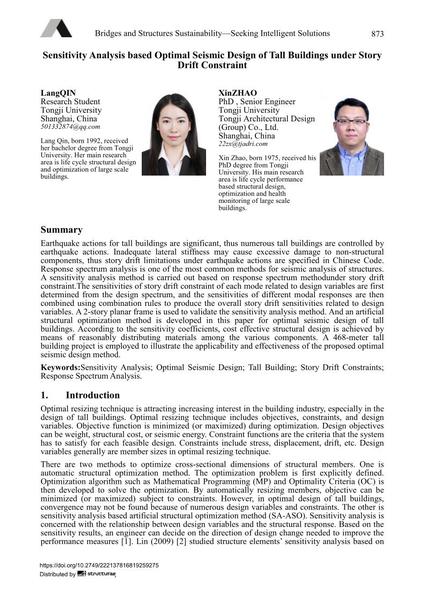Sensitivity Analysis based Optimal Seismic Design of Tall Buildings under Story Drift Constraint

|
|
|||||||||||
Détails bibliographiques
| Auteur(s): |
QIN Lang
Xin Zhao |
||||
|---|---|---|---|---|---|
| Médium: | papier de conférence | ||||
| Langue(s): | anglais | ||||
| Conférence: | IABSE Conference: Bridges and Structures Sustainability - Seeking Intelligent Solutions, Guangzhou, China, 8-11 May 2016 | ||||
| Publié dans: | IABSE Conference, Guangzhou, China, 8 – 11 May 2016 | ||||
|
|||||
| Page(s): | 873-880 | ||||
| Nombre total de pages (du PDF): | 8 | ||||
| Année: | 2016 | ||||
| DOI: | 10.2749/222137816819259275 | ||||
| Abstrait: |
Earthquake actions for tall buildings are significant, thus numerous tall buildings are controlled by earthquake actions. Inadequate lateral stiffness may cause excessive damage to non-structural components, thus story drift limitations under earthquake actions are specified in Chinese Code. Response spectrum analysis is one of the most common methods for seismic analysis of structures. A sensitivity analysis method is carried out based on response spectrum methodunder story drift constraint.The sensitivities of story drift constraint of each mode related to design variables are first determined from the design spectrum, and the sensitivities of different modal responses are then combined using combination rules to produce the overall story drift sensitivities related to design variables. A 2-story planar frame is used to validate the sensitivity analysis method. And an artificial structural optimization method is developed in this paper for optimal seismic design of tall buildings. According to the sensitivity coefficients, cost effective structural design is achieved by means of reasonably distributing materials among the various components. A 468-meter tall building project is employed to illustrate the applicability and effectiveness of the proposed optimal seismic design method. |
||||
